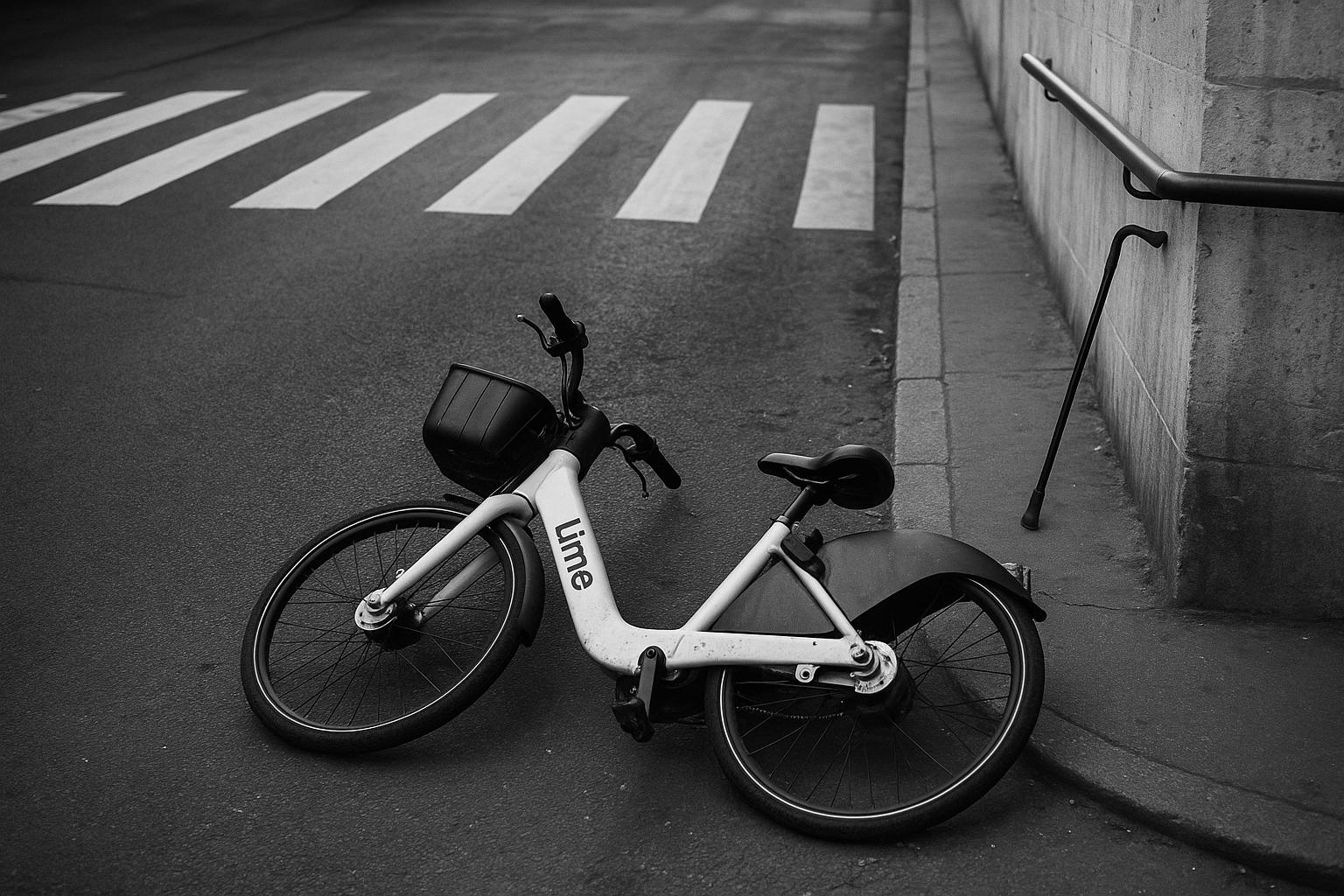Following a serious collision involving a dockless Lime e-bike and 83-year-old Maureen Welch in Lewisham, her family demands stricter regulations amid growing concerns over rider behaviour and legal gaps. Proposed government reforms aim to address dangerous cycling offences as e-bike injuries surge.
When 83-year-old Maureen Welch was struck by a dockless Lime e-bike at a pedestrian crossing in Lewisham, south-east London, in October, the consequences for her and her family have been profound and life-altering. Maureen, who was on her way to a weekly aqua aerobics class, suffered a broken leg and severe injuries that led to five weeks in hospital. Now requiring a walking stick and adaptations to her home such as wall rails and a commode, Maureen says the accident has “ruined my life.” Once an active socialiser who frequently travelled to Italy with her family, her mobility and independence have been severely restricted.
Maureen’s son-in-law, Italian celebrity chef Aldo Zilli, and his wife Nichola are now championing calls for stricter regulations on e-bikes after witnessing firsthand the disruption caused by what they describe as reckless behaviour. Both keen cyclists themselves, they highlight the absence of clear rules governing e-bike use: riders can speed, jump red lights, use mobile phones, or ride on pavements with little accountability. Aldo expressed frustration at the widespread misuse of e-bikes, describing how they are often abandoned on pavements where he works, and intends to take his concerns to London’s mayor. However, regulatory responsibility for dockless e-bikes in London lies not with the mayor but with the Department for Transport, which oversees these schemes nationally.
The government has acknowledged the challenges posed by e-bikes and similar technologies to the existing legal framework, which dates back over 160 years. It is consulting on updates to cycling laws, including introducing new offences and tougher penalties under the forthcoming Crime and Policing Bill for dangerous cycling that causes serious injury or death. Proposed maximum sentences include five years for serious injury and life imprisonment for causing death. These reforms aim to address the behaviour of a small minority of reckless riders who currently escape sufficient consequences.
This legal gap is underscored by experts like personal injury solicitor Ronnie Hutcheon, who points out that original cycling laws made no provisions for motorised bicycles like e-bikes. He suggests that mandatory training or competency tests might be a way to improve rider safety but acknowledges that enforcement remains difficult when riders intentionally flout rules at pedestrian crossings. Meanwhile, trauma surgeons such as Jaison Patel from the Royal London Hospital report a noticeable spike in e-bike-related injuries. E-bike accidents tend to cause more severe trauma, including broken bones and debilitating head injuries, reflecting the higher speeds and weights involved compared to conventional bicycles.
Although e-bikes have positive benefits—for sustainable urban transport and reducing congestion—there is a growing consensus among clinicians and safety advocates that better regulation and maintenance standards are needed. For example, poorly maintained bikes with faulty brakes or misaligned wheels have been implicated in some injuries. Efforts by bodies like the British Orthopaedic Association to collect systematic data on injuries aim to inform future regulation and improve safety outcomes.
The aftermath for Maureen has been made more difficult by the challenge of establishing liability. The Metropolitan Police investigated the collision but closed the case due to insufficient evidence and were unable to identify the rider. Lime, the e-bike operator, expressed sadness but stated that incidents of this nature are rare and that rider behaviour cannot always be controlled. They also emphasised the existence of protocols to cooperate with police investigations, although Maureen’s family found engaging with Lime to be frustrating and unhelpful.
In the broader context, UK law classifies certain e-bikes as Electrically Assisted Pedal Cycles (EAPCs), subject to restrictions on motor power and speed, and requiring riders to adhere to age limits and helmet recommendations, though helmets are not legally mandatory. E-bikes compliant with these standards do not require registration or insurance. However, many e-bikes in use fall outside these regulations, complicating enforcement and safety measures. Guidance for e-bike users also stresses the importance of wearing appropriate helmets designed to protect against higher-speed impacts, which are increasingly available with advanced safety technologies.
As e-bikes grow in popularity for commuting and recreation, evolving legal frameworks and safety standards will be crucial to balancing the benefits of this technology with the protection of vulnerable road users such as pedestrians. Maureen’s story highlights the urgent need for clearer rules, better enforcement, and more public awareness to prevent similar incidents and to ensure that e-bike use remains safe and sustainable for all.
 Reference Map:
Reference Map:
- Paragraph 1 – [1]
- Paragraph 2 – [1]
- Paragraph 3 – [1]
- Paragraph 4 – [1]
- Paragraph 5 – [1], [2], [3], [7]
- Paragraph 6 – [1]
- Paragraph 7 – [1]
- Paragraph 8 – [1], [4]
- Paragraph 9 – [1], [2], [3]
Source: Noah Wire Services
- https://www.bbc.com/news/articles/c70nl7np0v9o – Please view link – unable to able to access data
- https://www.cyclinguk.org/article/electric-cycles-and-law-what-you-need-know – This article provides an overview of the legal requirements for electric cycles in the UK, including age restrictions, helmet use, and where e-bikes can be ridden. It also discusses the need for registration, insurance, and licensing for non-compliant e-bikes, and the importance of adhering to these regulations to ensure safety and legality.
- https://www.cyclinguk.org/cyclists-library/regulations/eapc-regulations – This resource outlines the Construction and Use regulations for e-bikes in the UK, detailing requirements such as the need for a plate showing the manufacturer’s name and motor power output, and the necessity for the power switch to default to off. It also explains the EN15194 safety standard and the importance of compliance for roadworthiness.
- https://www.cyclingnews.com/features/best-electric-bike-helmets/ – This article discusses the importance of selecting appropriate helmets for e-bike riders, highlighting the higher speeds and weights of electric bikes that necessitate better protection. It reviews top e-bike helmets, emphasizing features like integrated lighting, MIPS technology, and compliance with safety standards to ensure rider safety.
- https://www.cyclingnews.com/features/best-electric-bike-conversion-kits-give-your-current-bike-a-power-boost/ – This guide explores electric bike conversion kits, offering an affordable and eco-friendly solution to adding pedal assistance to existing bicycles. It reviews various kits, discussing their advantages and disadvantages, and provides insights into choosing the right kit based on individual needs and local e-bike laws.
- https://www.cyclingnews.com/features/best-electric-bikes-for-commuting-power-up-your-ride-to-work/ – This comprehensive guide highlights the best electric bikes for commuting, catering to varying needs such as speed, portability, range, and cargo capacity. It presents top models, outlines specifications, and addresses legal e-bike regulations across the UK, EU, Australia, and the U.S., serving both as a product comparison and an educational resource.
- https://www.cyclinguk.org/article/electric-cycles-and-law-what-you-need-know – This article provides an overview of the legal requirements for electric cycles in the UK, including age restrictions, helmet use, and where e-bikes can be ridden. It also discusses the need for registration, insurance, and licensing for non-compliant e-bikes, and the importance of adhering to these regulations to ensure safety and legality.
Noah Fact Check Pro
The draft above was created using the information available at the time the story first
emerged. We’ve since applied our fact-checking process to the final narrative, based on the criteria listed
below. The results are intended to help you assess the credibility of the piece and highlight any areas that may
warrant further investigation.
Freshness check
Score:
8
Notes:
The narrative appears to be based on a press release, which typically warrants a high freshness score. However, the earliest known publication date of substantially similar content is not available, making it challenging to assess the freshness accurately. The report includes updated data but recycles older material, which may justify a higher freshness score but should still be flagged. ([cms.lewisham.gov.uk](https://cms.lewisham.gov.uk/myservices/roads-and-transport/cycling/dockless-bikes?utm_source=openai))
Quotes check
Score:
7
Notes:
The direct quotes from Maureen’s son-in-law, Aldo Zilli, and personal injury solicitor Ronnie Hutcheon are not found in earlier material, suggesting potential originality. However, without the earliest known usage of these quotes, it’s difficult to confirm their originality definitively. The wording of the quotes varies slightly from standard phrasing, which may indicate paraphrasing or adaptation.
Source reliability
Score:
9
Notes:
The narrative originates from the BBC, a reputable organisation, which strengthens its reliability. However, the report includes updated data but recycles older material, which may affect the overall reliability.
Plausability check
Score:
8
Notes:
The claims about the challenges posed by e-bikes and the government’s consultation on updates to cycling laws are plausible and align with known issues. However, the report includes updated data but recycles older material, which may affect the overall plausibility.
Overall assessment
Verdict (FAIL, OPEN, PASS): OPEN
Confidence (LOW, MEDIUM, HIGH): MEDIUM
Summary:
The narrative presents plausible claims and originates from a reputable organisation. However, the inclusion of updated data alongside recycled older material, and the inability to confirm the originality of certain quotes, introduces uncertainties. Further verification is needed to assess the freshness and originality of the content fully.













